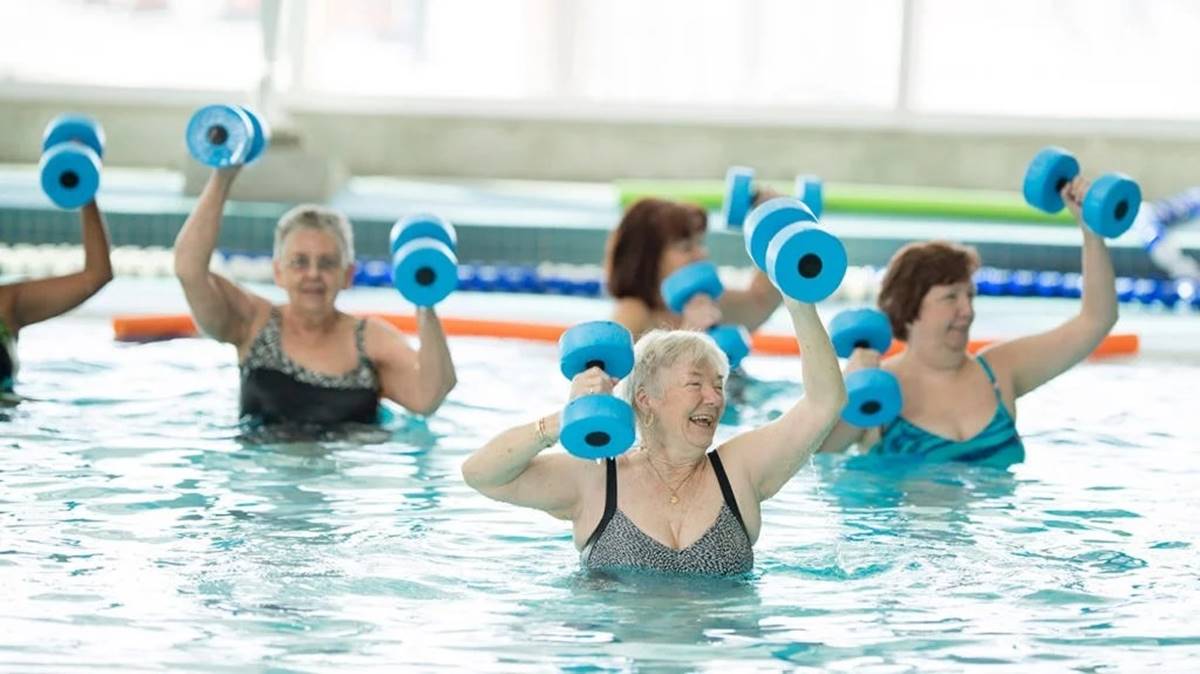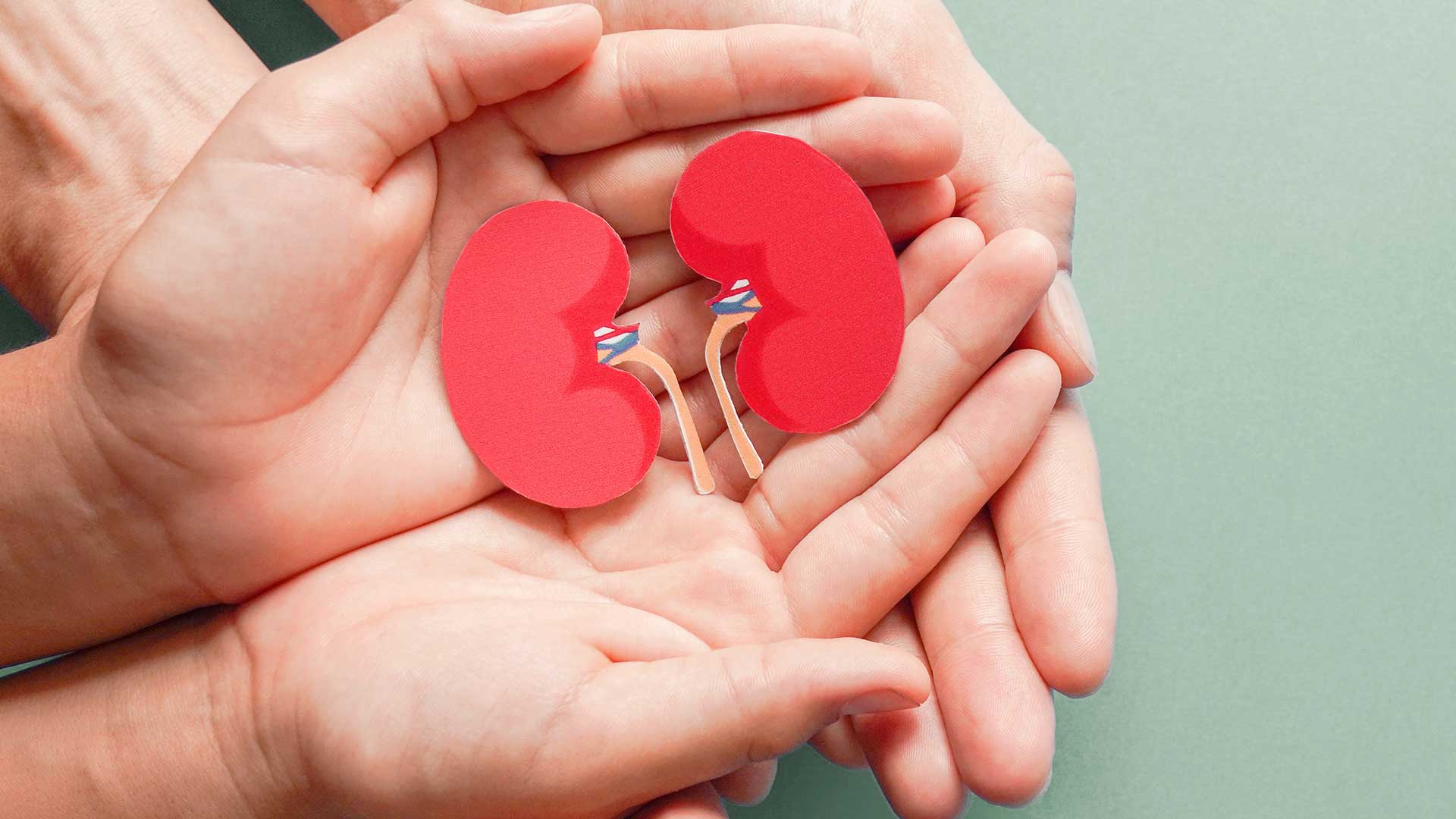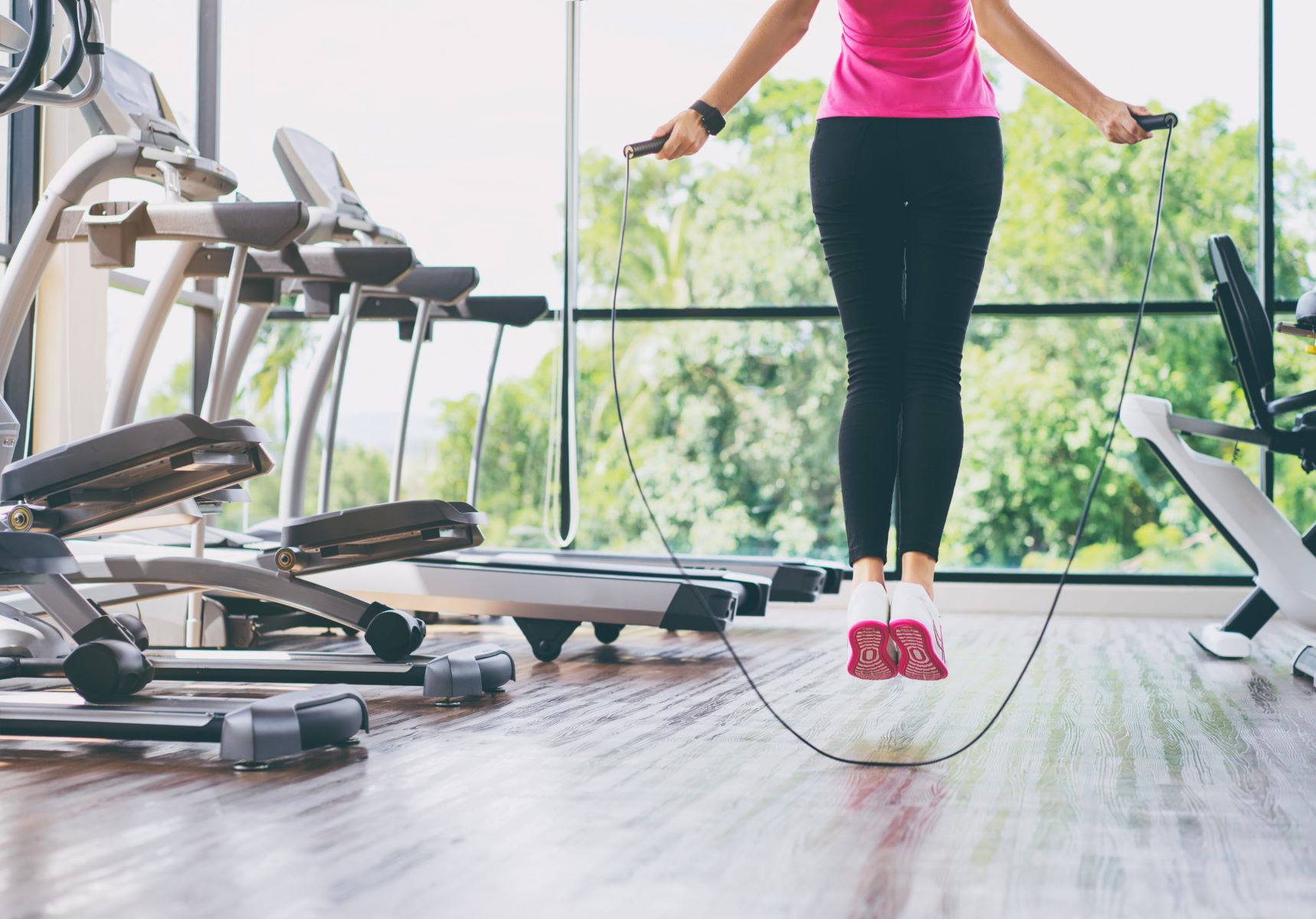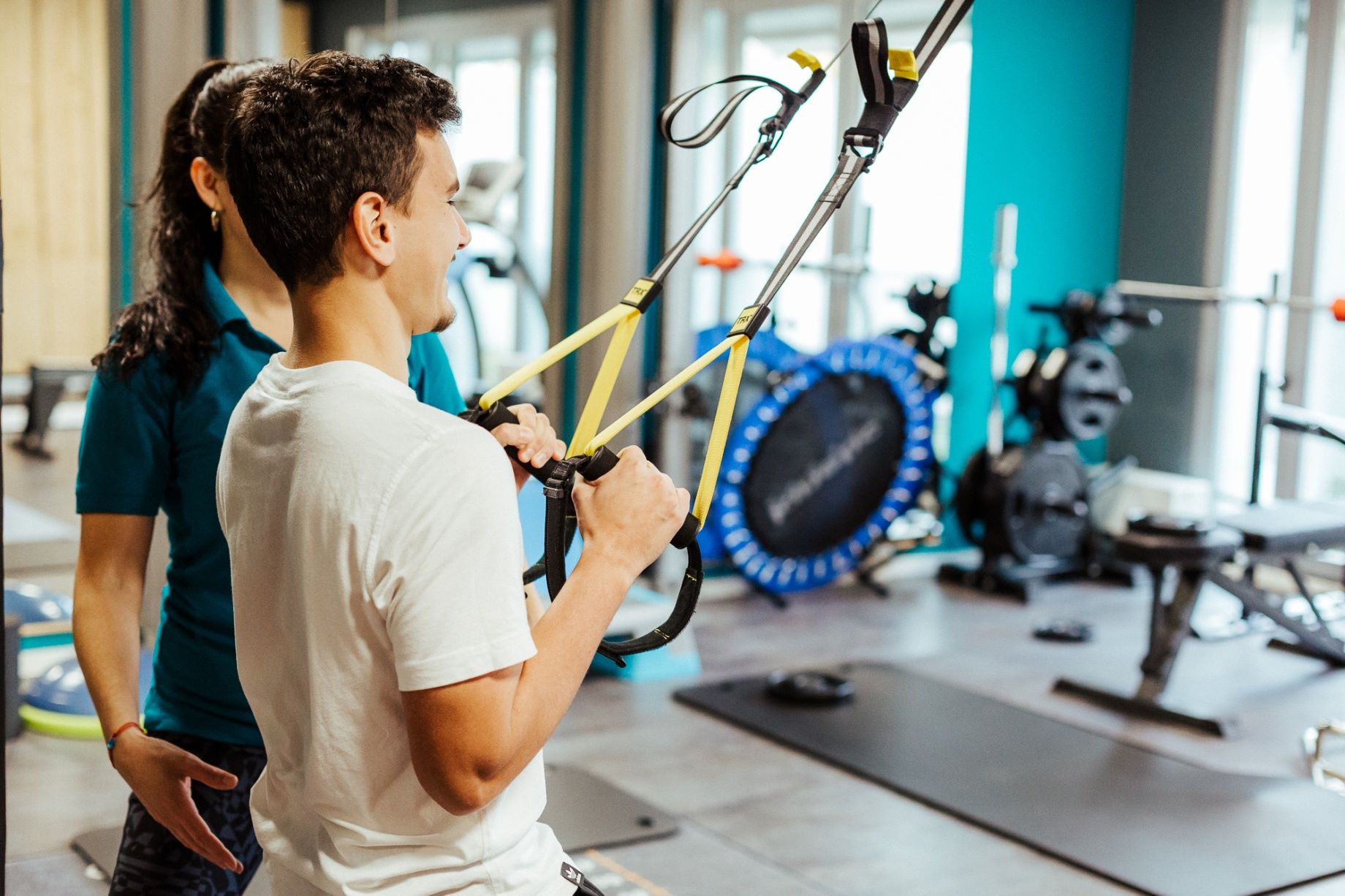Home>Misc>Featured>How Much Can Exercise Lower Blood Pressure


Featured
How Much Can Exercise Lower Blood Pressure
Modified: January 2, 2024
Learn how exercise can significantly lower your blood pressure levels. Discover the featured techniques for reducing hypertension and improving heart health.
Introduction
Welcome to our comprehensive guide on how exercise can significantly lower blood pressure. High blood pressure, also known as hypertension, is a common medical condition that affects millions of people worldwide. It is often referred to as the “silent killer” because it can go unnoticed for years but can have severe health consequences if left untreated. However, the good news is that adopting a regular exercise routine can play a crucial role in managing and reducing high blood pressure.
Before delving into the benefits of exercise for blood pressure control, it’s important to have a basic understanding of what blood pressure is and how it is measured. Blood pressure refers to the force that blood exerts against the walls of arteries as it is pumped around the body by the heart. It is measured in millimeters of mercury (mmHg) and consists of two numbers – systolic pressure over diastolic pressure. The systolic pressure represents the force exerted on arterial walls when the heart contracts, while the diastolic pressure represents the force exerted when the heart is at rest.
High blood pressure occurs when the force against the arterial walls is consistently too high. This can lead to serious health problems such as heart disease, stroke, and kidney damage. Lifestyle factors such as poor diet, obesity, stress, and lack of physical activity can contribute to the development of high blood pressure. However, making positive changes to these lifestyle factors, particularly through regular exercise, can have a significant impact on reducing blood pressure levels.
In this comprehensive guide, we will explore the various types of exercises that are beneficial for lowering blood pressure, the recommended duration and intensity of exercise, as well as the multitude of additional benefits that regular physical activity can provide for overall cardiovascular health. It’s important to note that while exercise is generally safe and beneficial for most individuals, those with existing health conditions or on specific medications should consult with their healthcare provider before starting an exercise program.
Understanding Blood Pressure
Before we dive into how exercise can lower blood pressure, let’s take a closer look at what blood pressure is and how it is measured. Blood pressure is the force exerted by circulating blood on the walls of the arteries, veins, and chambers of the heart. It is an essential component of the cardiovascular system, which transports oxygen, nutrients, and hormones throughout the body.
When your heart beats, it pumps blood into the arteries, creating pressure against their walls. This is called systolic pressure and is the higher number in a blood pressure reading. When your heart is at rest between beats, the pressure in your arteries drops, which is known as diastolic pressure. This is the lower number in a blood pressure reading.
Blood pressure is measured in millimeters of mercury (mmHg) and is recorded as two numbers, such as 120/80 mmHg. The top number (systolic pressure) represents the pressure in the arteries when the heart contracts, and the bottom number (diastolic pressure) represents the pressure when the heart is at rest.
Normal blood pressure is generally considered to be around 120/80 mmHg. However, blood pressure can vary throughout the day depending on factors such as physical activity, stress, and medication. When blood pressure consistently exceeds the normal range, it is referred to as high blood pressure or hypertension.
High blood pressure is a serious health condition that can lead to complications such as heart disease, stroke, and kidney damage. It is often asymptomatic, meaning there may be no noticeable symptoms until these complications arise. This is why high blood pressure is often called the “silent killer” and highlights the importance of regular blood pressure monitoring.
It is worth mentioning that blood pressure can be influenced by various factors, including genetics, age, gender, and lifestyle choices. Certain risk factors, such as a family history of high blood pressure and being overweight or obese, can increase the likelihood of developing hypertension. However, lifestyle factors such as a sedentary lifestyle, poor diet, excessive alcohol consumption, smoking, and chronic stress can also play a significant role in the development of high blood pressure.
Now that we have a better understanding of blood pressure and its measurement, let’s explore the role of exercise in lowering blood pressure and improving overall cardiovascular health.
The Role of Exercise in Lowering Blood Pressure
Exercise is often referred to as the “magic pill” for good health, and this holds true when it comes to managing and reducing high blood pressure. Regular physical activity has been shown to have a significant impact on lowering blood pressure levels in both hypertensive and prehypertensive individuals.
When you engage in exercise, your heart works harder to pump blood, which leads to increased blood flow and improved circulation. This, in turn, helps to strengthen the heart muscle and makes it more efficient at pumping blood throughout the body. As a result, the force against arterial walls is reduced, leading to a decrease in blood pressure.
Moreover, exercise also helps to improve the flexibility and elasticity of the blood vessels, reducing resistance to blood flow and further lowering blood pressure. It can also stimulate the release of nitric oxide, a compound that helps to widen blood vessels and improve blood flow.
Regular exercise has a range of additional benefits for cardiovascular health, such as reducing inflammation, improving cholesterol levels, decreasing the risk of blood clot formation, and promoting weight loss or maintenance. These factors, combined with the direct effects on blood pressure, make exercise a powerful tool for managing and preventing high blood pressure.
It is important to note that exercise alone may not completely eliminate the need for medication in individuals with severe hypertension. However, it can often lead to a reduction in medication dosage or decrease the risk of developing complications associated with high blood pressure.
Now that we understand the role of exercise in lowering blood pressure, let’s explore the different types of exercises that are particularly effective for blood pressure reduction.
Types of Exercise for Blood Pressure Reduction
Engaging in regular exercise doesn’t have to mean spending hours on a treadmill or lifting heavy weights at the gym. There are various types of exercises that can effectively lower blood pressure and improve cardiovascular health. The key is to find activities that you enjoy and that can be incorporated into your daily routine.
Aerobic exercise, also known as cardiovascular exercise, is particularly beneficial for reducing blood pressure. Examples of aerobic exercises include brisk walking, jogging, cycling, swimming, dancing, and aerobic classes. These activities increase your heart rate, improve oxygen utilization, and promote overall cardiovascular fitness. Aim for at least 150 minutes of moderate-intensity aerobic exercise or 75 minutes of vigorous-intensity exercise per week.
Strength training exercises, such as weightlifting or using resistance bands, can also have a positive impact on blood pressure. When you engage in strength training, your muscles exert force against your blood vessels, leading to increased blood flow and lower blood pressure. Strength training should be performed at least twice a week, targeting major muscle groups with 8-12 repetitions per exercise.
In addition to aerobic and strength training exercises, flexibility exercises are also important for overall cardiovascular health. Yoga, Pilates, and stretching exercises help improve muscle flexibility, joint range of motion, and relaxation. Incorporating flexibility exercises into your routine can enhance the effectiveness of aerobic and strength training exercises and promote overall physical well-being. Aim for 2-3 days per week of flexibility exercises.
Another form of exercise that has gained popularity is high-intensity interval training (HIIT). HIIT involves short bursts of intense activity followed by periods of rest or lower-intensity exercise. This type of workout can be an efficient way to lower blood pressure, improve cardiovascular fitness, and burn calories in a shorter amount of time. However, it is important to gradually build up your fitness level before incorporating HIIT into your routine to prevent injury.
Remember, the goal is to find activities that you enjoy and can stick to in the long term. This will help ensure consistency and maximize the benefits for blood pressure reduction and overall cardiovascular health.
Recommended Duration and Intensity of Exercise
When it comes to exercise for blood pressure reduction, finding the right balance of duration and intensity is key. The American Heart Association (AHA) and other health organizations provide guidelines to help individuals achieve optimal results for blood pressure control and cardiovascular health.
The AHA recommends at least 150 minutes of moderate-intensity aerobic exercise or 75 minutes of vigorous-intensity exercise per week for adults. Moderate-intensity exercise should make you break a sweat and breathe harder than normal, but you should still be able to carry on a conversation. Vigorous-intensity exercise should make you breathe rapidly and be unable to hold a conversation comfortably.
When it comes to strength training, aim for at least two days per week, targeting major muscle groups with 8-12 repetitions per exercise. It is essential to allow time for recovery between strength training sessions to allow your muscles to repair and grow stronger.
It’s important to note that you don’t have to do exercise for prolonged periods in one go. Breaking up your exercise into shorter bouts throughout the day can be just as effective. For example, you can do three 10-minute bouts of brisk walking or cycling throughout the day to accumulate your recommended total weekly exercise time.
As with any exercise program, it is crucial to listen to your body and gradually increase intensity and duration as your fitness level improves. Starting with low-impact activities and gradually progressing to higher impact exercises can help reduce the risk of injury and improve overall success in achieving blood pressure reduction goals.
Additionally, it is important to consult with your healthcare provider before starting any exercise program, especially if you have underlying health conditions or take medications that may affect your exercise tolerance or blood pressure response.
By following these recommended guidelines for duration and intensity of exercise, you can optimize the benefits for blood pressure reduction and overall cardiovascular health.
Benefits of Regular Exercise for Blood Pressure Control
Regular exercise offers numerous benefits for blood pressure control and overall cardiovascular health. Incorporating physical activity into your daily routine can have a profound impact on lowering blood pressure and reducing the risk of hypertension-related complications. Let’s explore some of the key benefits of regular exercise for blood pressure control.
1. Lowering Blood Pressure: Engaging in regular exercise can effectively lower both systolic and diastolic blood pressure. Physical activity promotes improved blood flow, reduces resistance in the arteries, and strengthens the heart muscle, leading to lower blood pressure readings.
2. Reducing the Risk of Hypertension: Regular exercise can help prevent the development of hypertension in the first place. It can decrease the likelihood of elevated blood pressure by improving cardiovascular fitness, managing weight, and promoting overall heart health.
3. Improving Cardiovascular Health: Exercise strengthens the heart muscle, improves circulation, and enhances cardiovascular fitness. It can reduce the risk of heart disease, stroke, and other cardiovascular complications associated with high blood pressure.
4. Enhancing Weight Management: Physical activity is essential for maintaining a healthy weight or achieving weight loss. Being overweight or obese is a significant risk factor for high blood pressure, and regular exercise can help manage weight and prevent or reduce hypertension.
5. Promoting Stress Reduction: Exercise has stress-relieving effects on the body. Physical activity releases endorphins, which are natural mood boosters, and can help alleviate stress and anxiety. Reducing stress levels can positively impact blood pressure and overall cardiovascular health.
6. Improving Insulin Sensitivity: Physical activity can enhance insulin sensitivity, which helps regulate blood sugar levels. Improved insulin sensitivity reduces the risk of developing type 2 diabetes, a condition that significantly increases the risk of high blood pressure.
7. Strengthening Blood Vessels: Exercise helps improve the flexibility and elasticity of blood vessels, reducing the resistance to blood flow. This leads to improved circulatory function and further contributes to blood pressure reduction.
These are just a few of the many benefits that regular exercise provides for blood pressure control and overall cardiovascular health. By incorporating exercise into your lifestyle, you can take control of your blood pressure levels and reduce your risk of hypertension-related complications.
Precautions and Considerations for Exercising with High Blood Pressure
While exercise is generally safe and beneficial for individuals with high blood pressure, there are some precautions and considerations to keep in mind. It is always important to consult with your healthcare provider before starting an exercise program, especially if you have been diagnosed with hypertension or are taking medications to manage your blood pressure. Here are some key precautions and considerations for exercising with high blood pressure:
1. Medical Clearance: Before starting any exercise regimen, it is crucial to obtain medical clearance from your healthcare provider. They can evaluate your specific situation and provide personalized recommendations based on your health status and any medications you may be taking.
2. Monitoring Blood Pressure: Regularly monitor your blood pressure before, during, and after exercise. This will help you track any changes and ensure that your blood pressure remains within a safe range. If you notice any significant increases or decreases, consult your healthcare provider.
3. Start Slowly and Gradually: If you have been inactive or have not exercised in a while, start slowly and gradually increase the intensity and duration of your workouts. This will allow your body to adjust and reduce the risk of sudden spikes in blood pressure.
4. Avoid Overexertion: Pushing yourself too hard during exercise can put excessive strain on your heart and blood vessels. Listen to your body and choose activities and intensities that feel challenging but manageable. It’s important to exercise at a level that allows you to breathe comfortably and carry on a conversation.
5. Avoid Valsalva Maneuvers: Valsalva maneuvers involve holding your breath and straining, such as when lifting heavy weights. These maneuvers can cause a sudden increase in blood pressure and should be avoided or done with caution if you have high blood pressure.
6. Stay Hydrated: Proper hydration is important during exercise, as it helps maintain normal blood volume and blood pressure. Drink plenty of water before, during, and after your workouts to avoid dehydration.
7. Consider Medication Timing: If you are taking medication to control your blood pressure, consult with your healthcare provider regarding the best time to exercise in relation to taking your medication. Some medications may have specific considerations, such as avoiding intense exercise within a certain time frame of taking the medication.
8. Modify Intensity and Type of Exercise: If certain exercises or activities seem to cause discomfort or significant increases in blood pressure, consider modifying the intensity, duration, or type of exercise. Low-impact activities like swimming, walking, or cycling may be more suitable for individuals with high blood pressure.
It’s essential to communicate openly with your healthcare provider about your exercise plans and any concerns you may have. They can provide personalized guidance based on your specific health condition and help ensure that your exercise routine is safe and beneficial for managing your high blood pressure.
Conclusion
In conclusion, exercise plays a crucial role in managing and reducing high blood pressure. By incorporating regular physical activity into your daily routine, you can significantly lower blood pressure levels and improve overall cardiovascular health.
Understanding blood pressure is the first step in taking control of your health. By monitoring your blood pressure and working with your healthcare provider, you can develop a personalized exercise plan that meets your specific needs and goals.
There are various types of exercises that can effectively lower blood pressure, including aerobic exercises, strength training, flexibility exercises, and high-intensity interval training. Finding activities that you enjoy and can commit to is key to ensuring consistency and maximizing the benefits for blood pressure control.
In addition to lowering blood pressure, regular exercise offers a multitude of additional benefits. It can improve cardiovascular health, enhance weight management, reduce stress, improve insulin sensitivity, and strengthen blood vessels.
However, it is important to exercise caution and take certain precautions when exercising with high blood pressure. Obtaining medical clearance, monitoring blood pressure, starting slowly and gradually, avoiding overexertion, and staying hydrated are important considerations to keep in mind.
Remember, it’s always best to consult with your healthcare provider before starting an exercise program, especially if you have high blood pressure or other underlying health conditions.
By incorporating regular exercise into your lifestyle and making healthy lifestyle choices, you can take control of your blood pressure levels, reduce the risk of hypertension-related complications, and improve your overall well-being. So lace up your sneakers, find an activity you enjoy, and start reaping the benefits of exercise for blood pressure control.









